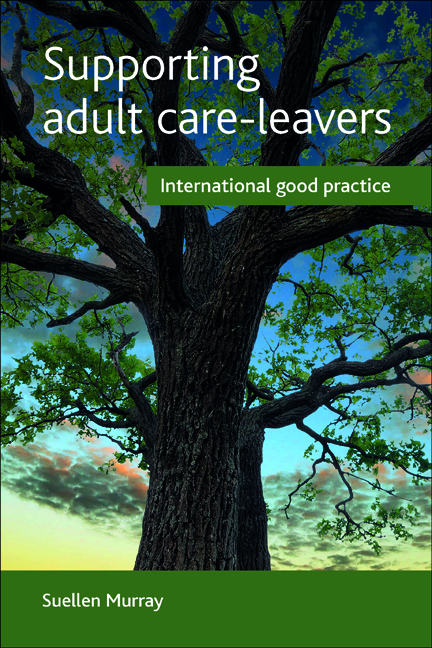Book contents
- Frontmatter
- Author biography
- Acknowledgements
- Contents
- List of abbreviations
- List of tables, figures and boxes
- One Introduction
- Two Care and its aftermath
- Three Public inquiries
- Four Apologies, memorials and other acknowledgements
- Five Reparation and redress
- Six Specialist support
- Seven Access to records and family reunification
- Eight Advocacy and consumer participation
- Nine Good practice in supporting adult care-leavers
- Notes and references
- Select bibliography
- Index
Nine - Good practice in supporting adult care-leavers
Published online by Cambridge University Press: 01 September 2022
- Frontmatter
- Author biography
- Acknowledgements
- Contents
- List of abbreviations
- List of tables, figures and boxes
- One Introduction
- Two Care and its aftermath
- Three Public inquiries
- Four Apologies, memorials and other acknowledgements
- Five Reparation and redress
- Six Specialist support
- Seven Access to records and family reunification
- Eight Advocacy and consumer participation
- Nine Good practice in supporting adult care-leavers
- Notes and references
- Select bibliography
- Index
Summary
In Canada, our history of institutional abuse has been a tragedy of enormous proportion. It is not, sadly, only an issue of the past. (Law Commission of Canada, 2000)
Harmful experiences in care are not unique to Canada. In every country where inquiries have been held, there has been shocking evidence of how poorly many children have been treated. What is more, this abuse, inadequate care and separation from family has typically resulted in long-term impacts. Furthermore, while not all of the countries under review in this book have undertaken public inquiries, there is no reason to think that the findings would be that different as three key factors were likely to have been in place: the children were vulnerable, they were relatively powerless in relation to those who cared for them and wider society was unaware of their plight or unwilling to act. At the same time, we know that some children had positive experiences in care.
Having established that some children had received poor treatment, this book set out to outline what had been done about the long-term harmful effects of a childhood in care. In doing so, it sought an answer to the question: how can we best support adult care-leavers? So, when I started the research for this book, I wanted to know how the five countries of Australia, Canada, Ireland, New Zealand and the UK have responded to adult care-leavers, and what is good practice. I had begun to know something about this from my previous research doing life-history interviews with people who grew up in care in Australia and researching access to personal records about time in care. I knew already, generally, that there had been different social policy responses to adult care-leavers internationally. However, what became quickly apparent was that there are striking differences across countries, as well as within countries. So, while the focus of my enquiry was on how countries have responded and what is good practice, in the back of my mind, I was also thinking about why. Why are there different responses among these countries? Why have some countries provided responses to some groups, but not others? This, then, could explain the differences, the examples of good practice and how they might be replicated elsewhere.
Early on, I had been told that cost was one of the key reasons that social policies had not been implemented in certain contexts.
- Type
- Chapter
- Information
- Supporting Adult Care-LeaversInternational Good Practice, pp. 183 - 196Publisher: Bristol University PressPrint publication year: 2015

